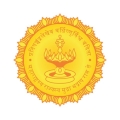Introduction
Marathwada: An Overview
Marathwada is a region in Maharashtra located around the Godavari River basin, with Chhatrapati Sambhajinagar as its headquarters. It consists of eight districts and houses 16.84% of Maharashtra’s population, with around 30% living below the poverty line. The region partially falls under a rain shadow area, with 90% of agriculture being rainfed. Major cities like Chhatrapati Sambhajinagar, Jalna, Nanded, Ambajogai, Parli, and Latur serve as hubs for industry, education, and tourism. Historically, it flourished during the Satavahana and Yadava periods. Marathi is the primary language, and the region is culturally rich, home to three of the twelve Jyotirlingas.
📜 History
Since 1861, Marathwada has been known by its current name, previously referred to as the Marathi-speaking part of the Hyderabad State. The history of this region dates back to the 4th century BCE, with earlier settlements existing even before that. Mesolithic-age relics (40,000 years old) have been found at Kivla (Nanded), and Upper Paleolithic tools (25,000 years old) have been discovered at Bhokar (Nanded). The Neolithic period saw advancements in agriculture and pottery, although concrete evidence from Marathwada is limited. By the 7th-8th century CE, a parallel Neolithic culture existed in this region, identified by burial practices involving grave goods.
🏛 Ancient History
- Maurya Empire (4th century BCE) – Evidence of trade and cultural exchange found in Ashoka’s inscriptions.
- Satavahana Dynasty (250 BCE – 260 CE) – The first major empire of South India; promoted trade, urbanization, and cultural growth.
- Vakataka Dynasty (3rd – 6th century CE) – Known for the Ajanta cave paintings.
- Rashtrakuta Empire (8th – 10th century CE) – Originated from Latur, expanded across India; built the Kailasa Temple at Ellora.
- Yadava Dynasty (12th – 13th century CE) – Devagiri (Daulatabad) was its capital.
Following this, Marathwada was under Muslim rule for 400 years. On September 17, 1948, it was liberated, and on May 1, 1960, it was merged into Maharashtra.
🌟 Cultural Influence and Importance
Marathwada plays a crucial role in Maharashtra’s cultural and political development. The capitals of Satavahana, Rashtrakuta, and Yadava dynasties were located at Paithan, Kandhar, Verul, and Devagiri. These dynasties encouraged trade, urbanization, and the arts.
- 🏛 Kailasa Temple, Ellora: A unique example of architectural brilliance.
- 🛍 Paithan, Ter, and Devagiri: Trade centers that facilitated international commerce.
- 📜 Marathi Language and Literature: Shri Mukundraj Swami wrote the first Marathi book in Ambajogai.
Leaders like Shankarrao Chavan contributed significantly to water conservation and irrigation projects in Marathwada.
🌏 Geographical Location & Major Cities
Marathwada is bordered by Vidarbha (east), Khandesh (north), Western Maharashtra (west), and Karnataka (south), with the Godavari is the primary river flowing through the region.
🏙 Major Cities
- Chhatrapati Sambhajinagar (Aurangabad) – An industrial hub; home to Ajanta-Ellora Caves, Bibi Ka Maqbara, Daulatabad Fort, and Jayakwadi Dam.
- Ambajogai (Beed) – The cultural capital of Marathwada; famous for Yogeshwari Temple and Mukundraj Samadhi.
- Dharashiv (Osmanabad) – Notable for Dharashiv Caves, Tulja Bhavani Temple, and Kaal Bhairavnath Temple at Sonari.
- Nanded – The sub-capital of Marathwada; houses the Sachkhand Gurudwara, situated on the banks of the Godavari River.
- Parbhani – Home to Vasantrao Naik Marathwada Agricultural University and an important railway junction.
- Latur – Known for its education system, particularly the ‘Latur Pattern’.
- Hingoli – Famous for Aundha Nagnath Jyotirlinga and its Dussehra celebrations.
- Parli Vaijnath – An industrial center and home to the Vaijnath Jyotirlinga.
🛕 Significant Religious & Historical Sites
- Jyotirlingas: Parli Vaijnath, Aundha Nagnath, Grishneshwar.
- Gurudwara: Sachkhand Gurudwara, Nanded.
- Shakti Peetha: Mahur (Renuka Devi Temple).
- Famous Temples: Tulja Bhavani Temple (Tuljapur), Kedarnath Temple (Dharmapuri), Kaal Bhairavnath Temple (Sonari), Shri Kshetra Narayangad.
🏰 Historical Landmarks
- 🏰 Devgiri Fort, (Daulatabad, Chhatrapati Sambhajinagar): Historical forts.
- 📍 Ambajogai: A religious and cultural hub.
- 🏰 Naldurg Fort, Bhuikot Fort (Beed): Historical forts.
- ⛪ Dharmapuri Fort, Kedareshwar Temple: Chalukyan-era architecture.
🌿 Birthplaces of Saints
- 🕉 Sant Namdev: Narsi (Namdev).
- 📖 Sant Dnyaneshwar: Apegaon.
- 🙏 Sant Janabai: Gangakhed.
- 🕌 Sai Baba (Shirdi): Pathri.
- 📿 Sant Eknath: Paithan.
- 🕍 Samarth Ramdas: Jamb.
🌊 Rivers in Marathwada
- Godavari – The primary river, flowing from the northwest to the southeast.
- Manjara – Originates in Patoda (Beed), merges with the Godavari at Nanded.
- Sindphana – Originates in Patoda (Beed), joins the Godavari near Majalgaon.
- Sina – Flows along Beed’s southwestern border.
- Kayadhu – Flows along Hingoli’s northeastern border.
- Manikarnika – Flows through Beed and Majalgaon, merging with Sindphana.
- Wan – Originates in Dharur Ghat, joins the Godavari, with a dam at Nagapur.
✨ Marathwada – A region rich in history, religion, and culture ✨



